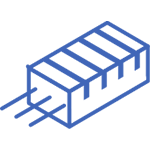The Overview of MS5637 Pressure Sensor [Video]
TE Connectivity Measurement Specialties
Absolute Pressure Sensor I2C -40°C~85°C 4.35PSI ~ 17.4PSI (30kPa ~ 120kPa) No Port ±0.058PSI (±0.4kPa) 24 b 1.5V~3.6V









Absolute Pressure Sensor I2C -40°C~85°C 4.35PSI ~ 17.4PSI (30kPa ~ 120kPa) No Port ±0.058PSI (±0.4kPa) 24 b 1.5V~3.6V
The MS5637 is an ultra-compact micro altimeter. This article introduces its pinout, advantage, application circuit and more details about the MS5637. There is a huge range of Semiconductors, Capacitors, Resistors and ICs in stock. Welcome RFQ!

PiicoDev Pressure Sensor MS5637 | Raspberry Pi Pico Guide
MS5637 Description
The MS5637 is an ultra-compact micro altimeter. It is optimized for altimeter and barometer applications in smartphones and Tablet PCs. The altitude resolution at sea level is 13 cm of air. The sensor module includes a high-linearity pressure sensor and an ultra-low power 24 bit ΔΣ ADC with internal factory-calibrated coefficients. It provides a precise digital 24-bit pressure and temperature value and different operation modes that allow the user to optimize for conversion speed and current consumption. A high-resolution temperature output allows the implementation of an altimeter/thermometer function without any additional sensor.
The MS5637 can be interfaced with any microcontroller with an I2C-bus interface. The communication protocol is simple, without the need of programming internal registers in the device.
MS5637 Pinout
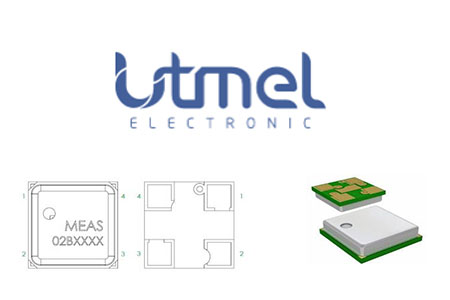
MS5637 Pinout
MS5637 CAD Model
Symbol
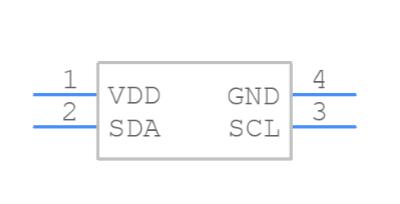
MS5637 Symbol
Footprint

MS5637 Footprint
3D Model

MS5637 3D Model
MS5637 Advantage
It provides a precise digital 24-bit pressure and temperature value and different operation modes that allow the user to optimize for conversion speed and current consumption.
A high-resolution temperature output allows the implementation of an altimeter/thermometer function without any additional sensor.
Small dimensions of 3 x 3 x 0.9 mm3 allow the integration in mobile devices.
The communication protocol is simple, without the need of programming internal registers in the device.
The sensing principle employed leads to very low hysteresis and high stability of both pressure and temperature signal.
Specifications
- TypeParameter
- Lifecycle Status
Lifecycle Status refers to the current stage of an electronic component in its product life cycle, indicating whether it is active, obsolete, or transitioning between these states. An active status means the component is in production and available for purchase. An obsolete status indicates that the component is no longer being manufactured or supported, and manufacturers typically provide a limited time frame for support. Understanding the lifecycle status is crucial for design engineers to ensure continuity and reliability in their projects.
ACTIVE (Last Updated: 1 week ago) - Factory Lead Time16 Weeks
- Package / Case
refers to the protective housing that encases an electronic component, providing mechanical support, electrical connections, and thermal management.
4-SMD, No Lead Exposed Pad - Surface Mount
having leads that are designed to be soldered on the side of a circuit board that the body of the component is mounted on.
YES - Mounting Feature
a process by which the operating system makes files and directories on a storage device (such as hard drive, CD-ROM, or network share) available for users to access via the computer's file system.
SURFACE MOUNT - Number of Pins8
- Operating Temperature
The operating temperature is the range of ambient temperature within which a power supply, or any other electrical equipment, operate in. This ranges from a minimum operating temperature, to a peak or maximum operating temperature, outside which, the power supply may fail.
-40°C~85°C - Packaging
Semiconductor package is a carrier / shell used to contain and cover one or more semiconductor components or integrated circuits. The material of the shell can be metal, plastic, glass or ceramic.
Cut Tape (CT) - Published2013
- Part Status
Parts can have many statuses as they progress through the configuration, analysis, review, and approval stages.
Active - Moisture Sensitivity Level (MSL)
Moisture Sensitivity Level (MSL) is a standardized rating that indicates the susceptibility of electronic components, particularly semiconductors, to moisture-induced damage during storage and the soldering process, defining the allowable exposure time to ambient conditions before they require special handling or baking to prevent failures
1 (Unlimited) - Applications
The parameter "Applications" in electronic components refers to the specific uses or functions for which a component is designed. It encompasses various fields such as consumer electronics, industrial automation, telecommunications, automotive, and medical devices. Understanding the applications helps in selecting the right components for a particular design based on performance, reliability, and compatibility requirements. This parameter also guides manufacturers in targeting their products to relevant markets and customer needs.
Board Mount - Voltage - Supply
Voltage - Supply refers to the range of voltage levels that an electronic component or circuit is designed to operate with. It indicates the minimum and maximum supply voltage that can be applied for the device to function properly. Providing supply voltages outside this range can lead to malfunction, damage, or reduced performance. This parameter is critical for ensuring compatibility between different components in a circuit.
1.5V~3.6V - Reach Compliance Code
Reach Compliance Code refers to a designation indicating that electronic components meet the requirements set by the Registration, Evaluation, Authorization, and Restriction of Chemicals (REACH) regulation in the European Union. It signifies that the manufacturer has assessed and managed the chemical substances within the components to ensure safety and environmental protection. This code is vital for compliance with regulations aimed at minimizing risks associated with hazardous substances in electronic products.
unknown - Output
In electronic components, the parameter "Output" typically refers to the signal or data that is produced by the component and sent to another part of the circuit or system. The output can be in the form of voltage, current, frequency, or any other measurable quantity depending on the specific component. The output of a component is often crucial in determining its functionality and how it interacts with other components in the circuit. Understanding the output characteristics of electronic components is essential for designing and troubleshooting electronic circuits effectively.
24 b - Termination Style
"Termination style" in electronic components refers to the method used to connect the component to a circuit board or other electronic devices. It determines how the component's leads or terminals are designed for soldering or mounting onto the circuit board. Common termination styles include through-hole, surface mount, and wire lead terminations.Through-hole components have leads that are inserted through holes in the circuit board and soldered on the other side. Surface mount components have flat terminals that are soldered directly onto the surface of the circuit board. Wire lead terminations involve attaching wires to the component for connection.The choice of termination style depends on factors such as the type of component, the manufacturing process, and the space available on the circuit board. Different termination styles offer various advantages in terms of ease of assembly, reliability, and space efficiency in electronic designs.
SMD (SMT) Tab - Body Length or Diameter
Body length or diameter in electronic components refers to the physical dimensions of a component's housing, typically measured in millimeters or inches. It indicates the size of the component that affects its fit within a circuit board or system. This parameter is crucial for ensuring compatibility with the design and mounting of electronic devices. It can impact heat dissipation, electrical performance, and overall assembly efficiency. Accurate measurement of body length or diameter is essential for proper component selection and placement in electronic applications.
3mm - Body Breadth
Body breadth in electronic components refers to the width of the physical body of a component, such as a resistor, capacitor, or integrated circuit. This measurement is crucial for ensuring proper fit within a circuit board or enclosure. It can affect the component's thermal performance, mechanical stability, and overall compatibility with other components in a design. Body breadth is typically specified in millimeters or inches and is an important factor in the selection and design of electronic assemblies.
3 mm - Output Type
The "Output Type" parameter in electronic components refers to the type of signal or data that is produced by the component as an output. This parameter specifies the nature of the output signal, such as analog or digital, and can also include details about the voltage levels, current levels, frequency, and other characteristics of the output signal. Understanding the output type of a component is crucial for ensuring compatibility with other components in a circuit or system, as well as for determining how the output signal can be utilized or processed further. In summary, the output type parameter provides essential information about the nature of the signal that is generated by the electronic component as its output.
I2C - Nominal Supply Current
Nominal current is the same as the rated current. It is the current drawn by the motor while delivering rated mechanical output at its shaft.
20.09μA - Number of Bits24
- Accuracy
Accuracy in electronic components refers to the degree to which a measured value agrees with the true or accepted value. It evaluates the precision of a component in providing correct output or measurement under specified conditions. High accuracy indicates minimal deviation from the actual value, while low accuracy shows significant error in measurement. This parameter is crucial in applications where precise data is essential for reliable performance and decision-making.
±0.058PSI (±0.4kPa) - Response Time
the time taken for a circuit or measuring device, when subjected to a change in input signal, to change its state by a specified fraction of its total response to that change.
16440 μs - Operating Pressure
An operating pressure is the amount of internal force applied to the walls of some type of pressure vessel during normal conditions.
4.35PSI ~ 17.4PSI (30kPa ~ 120kPa) - Pressure Type
Pressure Type in electronic components refers to the type of pressure that the component can withstand without being damaged or malfunctioning. This parameter is important in applications where the component may be exposed to varying levels of pressure, such as in industrial or automotive settings. The pressure type specification typically includes information on the maximum pressure the component can handle, whether it is positive or negative pressure, and any specific conditions under which the component can operate safely. It is crucial to consider the pressure type rating when selecting electronic components for use in environments where pressure variations are a concern.
Absolute - Port Style
Port style in electronic components refers to the physical and electrical characteristics of a connection point on a device or circuit. It encompasses the design and configuration of ports used for input and output, including their shape, size, and pin arrangement. Different port styles are used to ensure compatibility and facilitate connections between various electronic devices and systems. This parameter is crucial for defining how components interface with one another in electronic design and integration.
No Port - Maximum Pressure
The parameter "Maximum Pressure" in electronic components refers to the maximum amount of pressure or force that the component can withstand without being damaged or failing. This specification is important for components that may be exposed to external pressure, such as in high-pressure environments or applications where physical pressure may be applied. Exceeding the maximum pressure rating of a component can lead to deformation, cracking, or complete failure of the component, potentially causing system malfunctions or safety hazards. It is crucial to adhere to the specified maximum pressure limits to ensure the reliable operation and longevity of electronic components in various applications.
87.02PSI (600kPa) - Sensors/Transducers Type
In electronic components, the parameter "Sensors/Transducers Type" refers to the specific type of sensor or transducer that is integrated into the component. Sensors are devices that detect changes in physical properties and convert them into electrical signals, while transducers are devices that convert one form of energy into another. The type of sensor or transducer used in an electronic component can vary widely depending on the intended application, such as temperature sensors, pressure sensors, proximity sensors, accelerometers, and more. Understanding the Sensors/Transducers Type parameter is crucial for selecting the right component for a particular electronic system or device, as different types of sensors/transducers have different functionalities and performance characteristics.
PRESSURE SENSOR,PEIZORESISTIVE - Pressure Range-Max
Pressure Range-Max in electronic components refers to the maximum amount of pressure that the component can withstand without being damaged or malfunctioning. This parameter is crucial in applications where the component may be exposed to varying levels of pressure, such as in industrial or automotive settings. It is typically specified in units such as pounds per square inch (psi) or pascals (Pa). Ensuring that electronic components are rated for the appropriate pressure range is essential to prevent failures and maintain the reliability of the overall system.
17.404 Psi - Pressure Sensing Mode
Pressure Sensing Mode refers to the operational setting of electronic components, particularly pressure sensors, that enables them to detect and quantify variations in pressure. In this mode, the sensors convert pressure changes into electrical signals, which can be processed and interpreted by electronic systems. This mode is essential for applications in industries such as automotive, aerospace, and healthcare, where precise pressure measurements are crucial for monitoring and control functions.
BAROMETRIC - Body Height
In electronic components, "Body Height" refers to the vertical dimension of the component's physical body or package. It is the measurement from the bottom of the component to the top, excluding any leads or terminals. Body Height is an important parameter to consider when designing circuit boards or enclosures to ensure proper fit and clearance. It is typically specified in datasheets or technical drawings provided by the component manufacturer. Understanding the Body Height of electronic components is crucial for proper placement and integration within a circuit or system.
0.9mm - REACH SVHC
The parameter "REACH SVHC" in electronic components refers to the compliance with the Registration, Evaluation, Authorization, and Restriction of Chemicals (REACH) regulation regarding Substances of Very High Concern (SVHC). SVHCs are substances that may have serious effects on human health or the environment, and their use is regulated under REACH to ensure their safe handling and minimize their impact.Manufacturers of electronic components need to declare if their products contain any SVHCs above a certain threshold concentration and provide information on the safe use of these substances. This information allows customers to make informed decisions about the potential risks associated with using the components and take appropriate measures to mitigate any hazards.Ensuring compliance with REACH SVHC requirements is essential for electronics manufacturers to meet regulatory standards, protect human health and the environment, and maintain transparency in their supply chain. It also demonstrates a commitment to sustainability and responsible manufacturing practices in the electronics industry.
No SVHC - RoHS Status
RoHS means “Restriction of Certain Hazardous Substances” in the “Hazardous Substances Directive” in electrical and electronic equipment.
RoHS Compliant - Lead Free
Lead Free is a term used to describe electronic components that do not contain lead as part of their composition. Lead is a toxic material that can have harmful effects on human health and the environment, so the electronics industry has been moving towards lead-free components to reduce these risks. Lead-free components are typically made using alternative materials such as silver, copper, and tin. Manufacturers must comply with regulations such as the Restriction of Hazardous Substances (RoHS) directive to ensure that their products are lead-free and environmentally friendly.
Lead Free
Parts with Similar Specs
MS5637 Functional Block Diagram
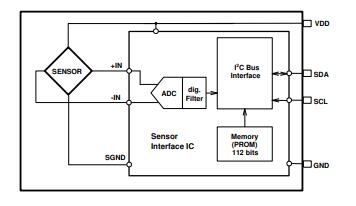
MS5637 Functional Block Diagram
MS5637 Package
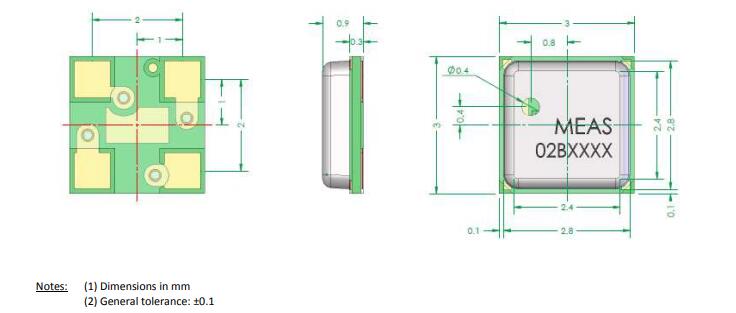
MS5637 Package
MS5637 Application
Smart-phones
Tablet PCs
Personal navigation devices
MS5637 Application Circuit
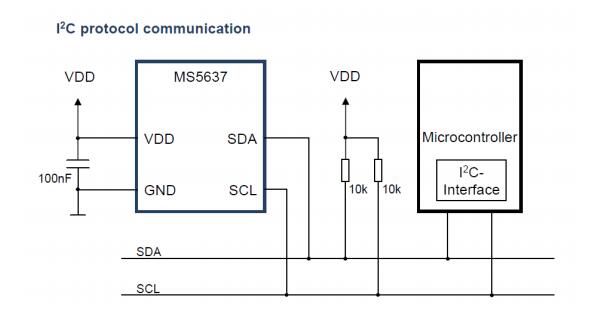
MS5637 Application Circuit
MS5637 Manufacturer
TE Connectivity (TE) Sensor Solutions is one of the largest sensor companies in the world, with innovative sensor products that help customers transform concepts into smart, connected systems. With the acquisition of Measurement Specialties (MEAS), TE offers an unmatched range of both connectivity and sensor solutions. TE Sensor Solutions’ broad portfolio of position, temperature, fluid properties, liquid level, humidity, and pressure technologies can be implemented for a wide range of applications across several industries, from industrial machinery, HVAC, process control and automation, to aerospace and defense, medical, consumer and appliance.
Datasheet PDF
- Datasheets :
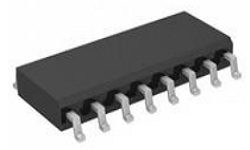 SG3525AP IC: Schematic, Applications and Datasheet
SG3525AP IC: Schematic, Applications and Datasheet03 November 20231780
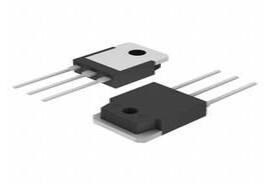 FGA25N120 IGBT: Application, Datasheet, Pinout
FGA25N120 IGBT: Application, Datasheet, Pinout14 October 202113043
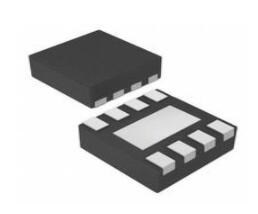 TPS22965 Load Switch: Datasheet, Pinout, Typical Application Circuit
TPS22965 Load Switch: Datasheet, Pinout, Typical Application Circuit21 April 2025801
 cr2 vs cr123:Which battery do you prefer?
cr2 vs cr123:Which battery do you prefer?29 March 202224709
 An In-depth Look at LTC7003IMSE#TRPBF Gate Driver: Features, Applications, and Reference Designs
An In-depth Look at LTC7003IMSE#TRPBF Gate Driver: Features, Applications, and Reference Designs06 March 2024160
 M10385 FM Module:Datasheet, Application, Schematic
M10385 FM Module:Datasheet, Application, Schematic01 September 2021729
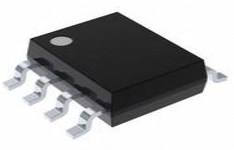 LM75 Temperature Sensor: Feature, Application and Datasheet
LM75 Temperature Sensor: Feature, Application and Datasheet27 July 20213352
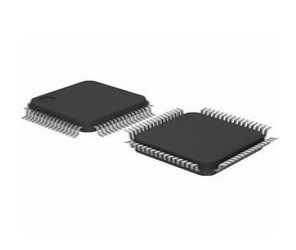 STM32F302RCT6 Microcontroller: 32-Bit, 64-LQFP, Pinout and Datasheet
STM32F302RCT6 Microcontroller: 32-Bit, 64-LQFP, Pinout and Datasheet17 January 2022651
 Volkswagen CFO: Chip Supply Shortage Will Continue Until 2024
Volkswagen CFO: Chip Supply Shortage Will Continue Until 202411 April 20223331
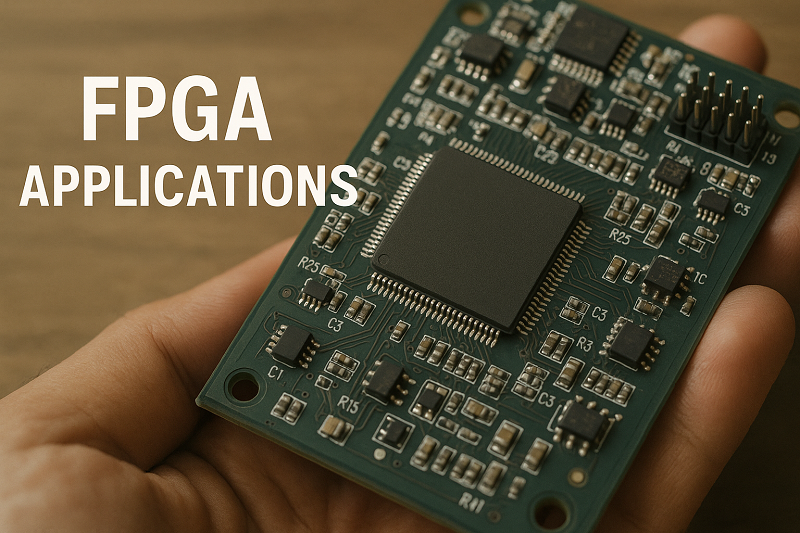 A Comprehensive Guide to FPGA Development Boards
A Comprehensive Guide to FPGA Development Boards11 September 20254139
 Reconfigurable Antennas: Improving Efficiency in Modern Communication
Reconfigurable Antennas: Improving Efficiency in Modern Communication24 December 20242254
 Silicon carbide (SiC) and gallium nitride (GaN), who is the future of wide bandgap (WBG) materials?
Silicon carbide (SiC) and gallium nitride (GaN), who is the future of wide bandgap (WBG) materials?07 October 20214536
 Always charge the battery to 100%? Stop it!
Always charge the battery to 100%? Stop it!15 October 20213598
 What is a Chipset?
What is a Chipset?09 July 20213552
 What is a Delay Circuit? 6 Types of Delay Circuits Explained
What is a Delay Circuit? 6 Types of Delay Circuits Explained28 March 202547204
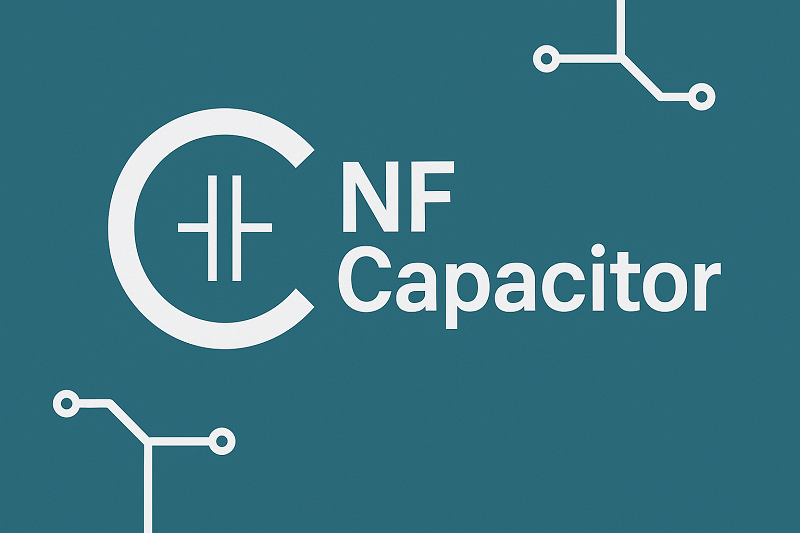 nF Capacitors: Definition, Conversion, Circuit Applications, and Selection
nF Capacitors: Definition, Conversion, Circuit Applications, and Selection12 August 20251418
TE Connectivity Measurement Specialties
In Stock
United States
China
Canada
Japan
Russia
Germany
United Kingdom
Singapore
Italy
Hong Kong(China)
Taiwan(China)
France
Korea
Mexico
Netherlands
Malaysia
Austria
Spain
Switzerland
Poland
Thailand
Vietnam
India
United Arab Emirates
Afghanistan
Åland Islands
Albania
Algeria
American Samoa
Andorra
Angola
Anguilla
Antigua & Barbuda
Argentina
Armenia
Aruba
Australia
Azerbaijan
Bahamas
Bahrain
Bangladesh
Barbados
Belarus
Belgium
Belize
Benin
Bermuda
Bhutan
Bolivia
Bonaire, Sint Eustatius and Saba
Bosnia & Herzegovina
Botswana
Brazil
British Indian Ocean Territory
British Virgin Islands
Brunei
Bulgaria
Burkina Faso
Burundi
Cabo Verde
Cambodia
Cameroon
Cayman Islands
Central African Republic
Chad
Chile
Christmas Island
Cocos (Keeling) Islands
Colombia
Comoros
Congo
Congo (DRC)
Cook Islands
Costa Rica
Côte d’Ivoire
Croatia
Cuba
Curaçao
Cyprus
Czechia
Denmark
Djibouti
Dominica
Dominican Republic
Ecuador
Egypt
El Salvador
Equatorial Guinea
Eritrea
Estonia
Eswatini
Ethiopia
Falkland Islands
Faroe Islands
Fiji
Finland
French Guiana
French Polynesia
Gabon
Gambia
Georgia
Ghana
Gibraltar
Greece
Greenland
Grenada
Guadeloupe
Guam
Guatemala
Guernsey
Guinea
Guinea-Bissau
Guyana
Haiti
Honduras
Hungary
Iceland
Indonesia
Iran
Iraq
Ireland
Isle of Man
Israel
Jamaica
Jersey
Jordan
Kazakhstan
Kenya
Kiribati
Kosovo
Kuwait
Kyrgyzstan
Laos
Latvia
Lebanon
Lesotho
Liberia
Libya
Liechtenstein
Lithuania
Luxembourg
Macao(China)
Madagascar
Malawi
Maldives
Mali
Malta
Marshall Islands
Martinique
Mauritania
Mauritius
Mayotte
Micronesia
Moldova
Monaco
Mongolia
Montenegro
Montserrat
Morocco
Mozambique
Myanmar
Namibia
Nauru
Nepal
New Caledonia
New Zealand
Nicaragua
Niger
Nigeria
Niue
Norfolk Island
North Korea
North Macedonia
Northern Mariana Islands
Norway
Oman
Pakistan
Palau
Palestinian Authority
Panama
Papua New Guinea
Paraguay
Peru
Philippines
Pitcairn Islands
Portugal
Puerto Rico
Qatar
Réunion
Romania
Rwanda
Samoa
San Marino
São Tomé & Príncipe
Saudi Arabia
Senegal
Serbia
Seychelles
Sierra Leone
Sint Maarten
Slovakia
Slovenia
Solomon Islands
Somalia
South Africa
South Sudan
Sri Lanka
St Helena, Ascension, Tristan da Cunha
St. Barthélemy
St. Kitts & Nevis
St. Lucia
St. Martin
St. Pierre & Miquelon
St. Vincent & Grenadines
Sudan
Suriname
Svalbard & Jan Mayen
Sweden
Syria
Tajikistan
Tanzania
Timor-Leste
Togo
Tokelau
Tonga
Trinidad & Tobago
Tunisia
Turkey
Turkmenistan
Turks & Caicos Islands
Tuvalu
U.S. Outlying Islands
U.S. Virgin Islands
Uganda
Ukraine
Uruguay
Uzbekistan
Vanuatu
Vatican City
Venezuela
Wallis & Futuna
Yemen
Zambia
Zimbabwe





